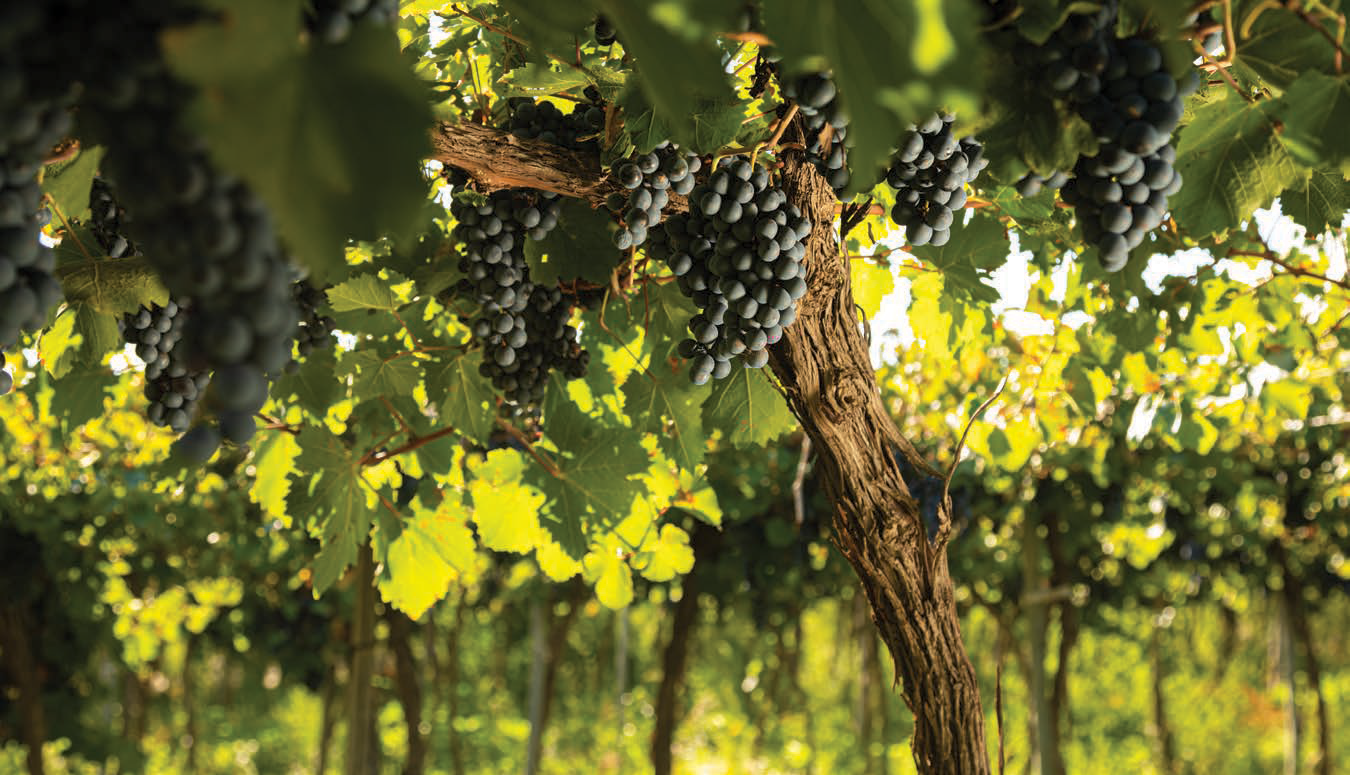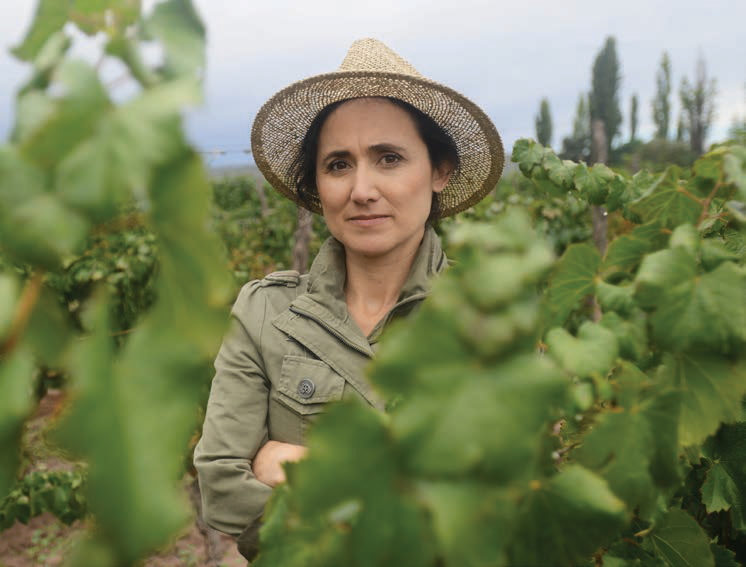Grape Profile: Bonarda in Argentina

This article originally appeared in the Fall/Winter 2022-2023 print issue of Quench Magazine.
Argentina is a wine-drinking country.
In 2020, it ranked seventh in the world in wine consumption per capita at 27.6 liters: more than Germany or Spain, and twice as much as Canada. Argentina is also a country where the economy is like a series of earthquakes and tidal waves. Sometimes it’s wealthy; sometimes there’s hyperinflation. Through it all, people need wine, whether or not they have a lot of money to spend on it.
That’s where Bonarda comes in. Bonarda was the most-planted variety in Argentina until about 20 years ago, when Malbec passed it. Growers like it because it produces large crops. Drinkers like it because it makes fresh, fruit-driven, soft-tannin red wine: perfect for quaffing when you quaff a lot. Malbec, which is harder to grow and more tannic, is for serious occasions; Bonarda is for every day. That’s the stereotype.
But often Bonarda and Malbec were blended together, because they’re a perfect couple. If Malbec is Argentina’s Cabernet Sauvignon, Bo-narda is its Merlot. I realize that doesn’t sound like a selling point, but many of the world’s most-loved red blends are based on Merlot. Bonarda also has that approachable, easy-to-drink fruitiness.
“I also like that there’s a spiciness, but it’s a little bit more fruity than Malbec,” said Laura Catena, managing director of Catena Zapata In 2020, it ranked seventh in the world in wine consumption per capita at 27.6 liters: more than Germany or Spain, and twice as much as Canada. Argentina is also a country where the economy is like a series of earthquakes and tidal waves. Sometimes it’s wealthy; sometimes there’s hyperinflation. Through it all, people need wine, whether or not they have a lot of money to spend on it.
That’s where Bonarda comes in. Bonarda was the most-planted variety in Argentina until about 20 years ago, when Malbec passed it. Growers like it because it produces large crops. Drinkers like it because it makes fresh, fruit-driven, soft-tannin red wine: perfect for quaffing when you quaff a lot. Malbec, which is harder to grow and more tannic, is for serious occasions; Bonarda is for every day. That’s the stereotype.
But often Bonarda and Malbec were blended together, because they’re a perfect couple. If Malbec is Argentina’s Cabernet Sauvignon, Bonarda is its Merlot. I realize that doesn’t sound like a selling point, but many of the world’s most-loved red blends are based on Merlot. Bonarda also has that approachable, easy-to-drink fruitiness.
“I also like that there’s a spiciness, but it’s a little bit more fruity than Malbec,” said Laura Catena, managing director of Catena Zapata acres. Argentina has more than 40,000 acres of it, so it’s easily the grape’s home base now.
Not being taken seriously as a grape is a vicious cycle: we see this with Carmenere in Chile. While Bonarda has the ability to create large crops, it’s still better to limit them for wine quality. Bonarda usually doesn’t get the attention in the winery that Malbec does, for better and worse: this is not a grape that benefi ts from a heavy oak treatment. But Bonarda is more forgiving than Carmenere; you can grow it in a less-favorable spot in the vineyard and crop the heck out of it and still get a quaffable wine. You just may not get something special.
The worst part of the cycle is in planting. In the 1960s and ‘70s, when Argentina was in a high-inflation cycle, growers ripped out Malbec to plant more Bonarda. But now it’s the opposite.
“A lot of the vineyards of Bonarda are really old vineyards,” Catena told Quench. “But the reason they’re old is that people are not replanting Bonarda. Whenever they replant, they replant with Malbec. (At our winery), we’re preserving different vines of Malbec. We’re doing the same with Bonarda. We’re really scared the genetic diversity of Bonarda is going to disappear.”
That would be a shame, because a big selling point for Bonarda is that it’s much more Laura Catena, managing director of Catena Zapata heat-tolerant than Malbec, or indeed than any Bordeaux variety. In California, that means it was planted in Calistoga, in the warmest part of Napa Valley. In Argentina, that means that while Malbec is planted in increasingly higher-elevation parts of Uco Valley to get cooler temperatures, Bonarda flourishes in lower altitudes under the hot sun. As global warming inexorably advances, that could be increasingly important.
“Bonarda thrives in real dry weather, and high temperature, around 40 Celsius,” said Alejandro Vigil, president of Wines of Argentina and winemaking director at Catena Zapata. “It grows well in pergola. It needs much sunlight on the leaves.”

Vigil makes single-vineyard Bonardas for his own winemaking project, El Enemigo, some from 100-year-old own-rooted vines.
“I remember my first time with a grower who worked in the vineyard; the vines were old and he was about 80 years old,” Vigil said. “He was interested in Bonarda but the younger workers weren’t. For Argentina, the people say Bonarda is cheap wine. The last five years, there are more higher end wines. We have great potential for this, especially in the east part of Mendoza.”
I have been a believer in Bonarda for a while because I like a quaffable red, and it’s slyly more interesting the more you drink it. In 2016 I spent a month in Argentina, and in a tasting-menu restaurant I had a carbonic-maceration Bonarda from a brand called Revolucionara that I shudder to bring up because I couldn’t find it in any wine shops in Buenos Aires, much less Calgary. But it was lovely like a cru Beaujolais: light in body but with great texture and complexity. That was my favorite wine from the whole month. It’s not the only Bonarda to remind me of Beaujolais. I experienced something like it again with Catena’s natural-wine version of Bonarda, La Marchigiana, which is fermented and aged in clay amphora. It’s juicy, fresh and lively, with a bottom note of concrete mineral-ity. It’s easy to drink yet gets more interesting as you go along, and the good news is this one you can buy in Canada and the USA. (Catena describes its label, the same as the one used by her great-grandfather in the early 1900s, as “a little bit art deco slash Mussolini.”)
“When I told my dad, ‘We’re going to make wine without sulfites in amphora,’ he said, ‘You’re not inventing anything. That’s how my grandfather made wine,” Catena said. “What I have found when I did my natural wine tastings is that there are some really good wines and some really bad wines. When we decided to make a natural wine, we decided to try 10 varieties that we like. Bonarda really shined. I don’t know if that was a result of the alcohol and the pH and enough tannin so that you don’t have any weird problems.”
Conventional Bonarda is just as agreeable (and safer). I’ll steal this line from one of my tasting notes for this story: A wine like this is easy for anyone who likes red wine to like.
Altos Los Hormigos Colonia “Las Liebres” Mendoza Bonarda 2020 13.5%
Made with organic grapes. A very dark purple color, this wine is juicy, fresh and a little savory. It’s a simple wine that isn’t ambitious, but is quaffable.
Dandelion Mendoza Bonarda 2020 13% (organic and Fair Trade certified)
This wine reminds me of what people want to make when they make wine at home: juicy and fruity, with black berry fruit and a bit of tannin on the finish. Not a wine for contemplation; I can imagine somebody’s grandfather slowly downing a bottle of this on the porch in the afternoon while chatting with the neighbors.
El Enemigo “El Barranco” Mendoza Bonarda 2017 13.5%
Winemaker Alejandro Vigil wants people to notice the impact of terroir on Bonarda, and it works with his single-vineyard series. This wine has a sweet-and-sour aroma characteristic of some Bonardas; it smells like dark berries but also with a sour cherry note. On the palate it’s juicy, low tannin, easy-drinking dark berry fruit with a slight sweet-and-sour note. The acidity is not pronounced but plays up on the finish.
El Enemigo “La Esperanza” Mendoza Bonarda 2017 13.5%
What a difference a vineyard makes. This wine delivers juicy dark fruit and a light-medium body with just a bit of tannin on the finish. There’s also a noticeable line of minerality. The finish is fairly short, but invites another sip.
Nicolas Catena “La Marchigiana” “Vino Natural Ancestral” Bonarda 2020 13%
Made in an amphora with no added sulfites, this is what you hope for from a natural wine (and don’t always get). There’s an exuberance to this: juicy red plum on the nose with a distinctive note of concrete minerality. It’s well balanced and more complex than it first appears. I don’t always sample the same open bottle the next day, but this one I did and it stayed fresh, pure and delightful.
Zuccardi “Emma” Valle de Uco Mendoza Bonarda 2018 13.5%
A lively wine with plenty of freshness and dark plum fruit. While you could find more complex wines, this is the kind of wine that pretty much anyone who likes red wines would find a reason to like.
